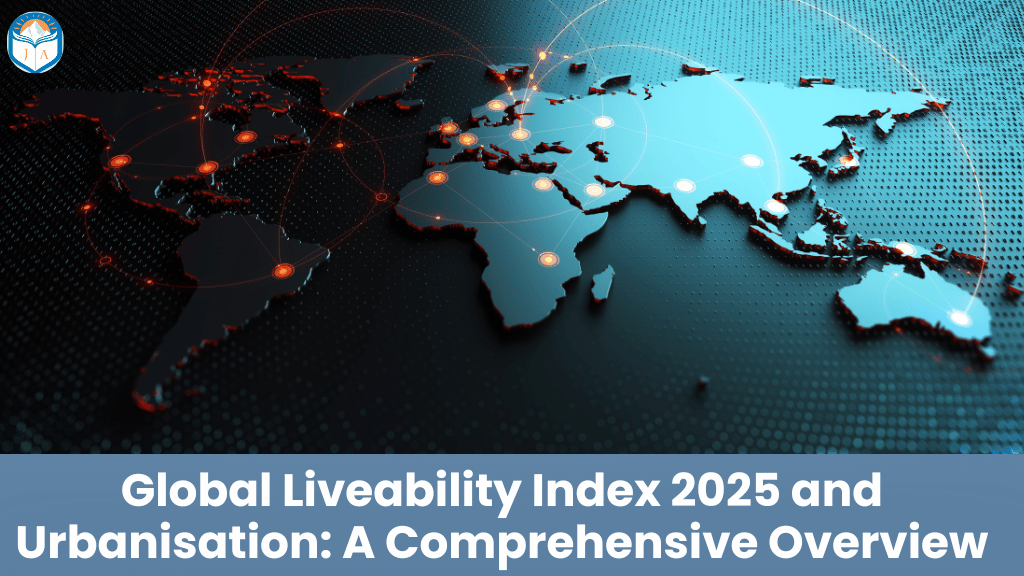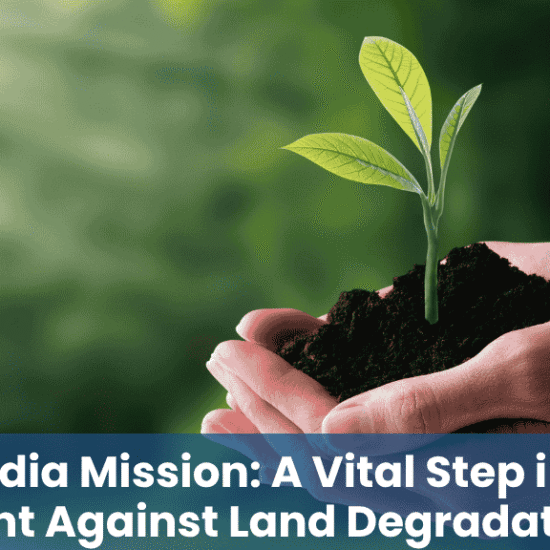Global Liveability Index 2025 and Urbanisation: A Comprehensive Overview
Introduction

As urbanisation accelerates across the globe, the quest for cities that offer better living conditions, opportunities, and infrastructure becomes ever more important. Urban migration is now a defining feature of socio-economic development, influencing policy priorities worldwide. Against this backdrop, the Global Liveability Index 2025, released by the Economist Intelligence Unit (EIU), offers a timely and insightful evaluation of the world’s most and least liveable cities.
What Is the Global Liveability Index?
The Global Liveability Index is a comprehensive annual assessment conducted by the Economist Intelligence Unit (EIU), which evaluates 173 cities across the globe based on the quality of life they offer. It measures liveability through 30 indicators grouped into five key categories:
- Stability
- Healthcare
- Culture and Environment
- Education
- Infrastructure
Each city receives a score between 1 and 100, with ratings such as acceptable, tolerable, uncomfortable, undesirable, or intolerable. These ratings are weighted to calculate an overall score and individual category scores, leading to a global ranking.
Key Findings of the 2025 Index
- Global Average Score Remains Static
The average liveability score across the 173 cities in 2025 remained unchanged from last year at 76.1/100. - Improvements and Declines
- Gains were noted in education, healthcare, and infrastructure.
- However, stability scores dropped by 0.2 points globally due to rising geopolitical tensions, civil unrest, and the ongoing housing crisis.
- Copenhagen Tops the List
Denmark’s capital, Copenhagen, dethroned Vienna to become the most liveable city in the world in 2025. It scored a perfect 100 in stability, education, and infrastructure.- Vienna, despite scoring higher in healthcare, saw a decline in stability due to increasing terror threats.
- Western Europe and Asia-Pacific Dominate Rankings
Western European cities once again led the rankings, followed closely by several cities in the Asia-Pacific region. Vancouver was the only North American city to make it to the top 10. - Least Liveable Cities
Cities plagued by war, weak public services, and failing infrastructure ranked at the bottom:- Damascus (Syria) retained its position as the least liveable city, with a score of just 30.7.
- Other low-ranking cities included Tripoli (Libya), Dhaka (Bangladesh), and Karachi (Pakistan).
- Decline in Stability Across Asia
Stability scores dropped in cities like Tehran, Taipei, and several cities in India due to increasing geopolitical tensions and conflict risks.
Understanding Urbanisation
Urbanisation is the process by which rural populations move to urban areas, leading to the physical, social, and economic growth of cities. It reflects a shift in lifestyle, occupation, and opportunities, often leading to:
- Increased demand for infrastructure and housing
- Diversified job markets
- Greater access to education and healthcare
- Challenges such as congestion, pollution, and inequality
Urban Development in India: The Smart Cities Mission
In response to rapid urbanisation, India launched the Smart Cities Mission on June 25, 2015, aiming to transform 100 cities into sustainable, citizen-friendly hubs.
Key Features:
- Area-Based Development: Focus on redevelopment, retrofitting, and greenfield projects.
- Pan-City Initiatives: Use of smart technologies for efficient governance and public service delivery.
- Flexible Timelines: Originally planned for 2021–2023, project deadlines have been extended to March 31, 2025.
Classification of Urban Areas in India
As per the Indian Census, urban areas are classified into:
- Statutory Towns: Areas with a notified urban local body (e.g., municipal corporation).
- Census Towns: Must meet three criteria:
- Minimum population of 5,000
- Population density of at least 400 persons per sq. km
- At least 75% of the male workforce engaged in non-agricultural activities
Conclusion
The Global Liveability Index 2025 serves as a valuable benchmark for assessing the quality of life in urban areas across the globe. It not only highlights the successes of cities like Copenhagen but also draws attention to the ongoing challenges faced by cities in conflict-prone or underserved regions. For countries like India, urbanisation presents both opportunities and challenges. While initiatives like the Smart Cities Mission aim to enhance urban life, continuous efforts are needed to ensure inclusivity, sustainability, and resilience in the face of global uncertainties.



